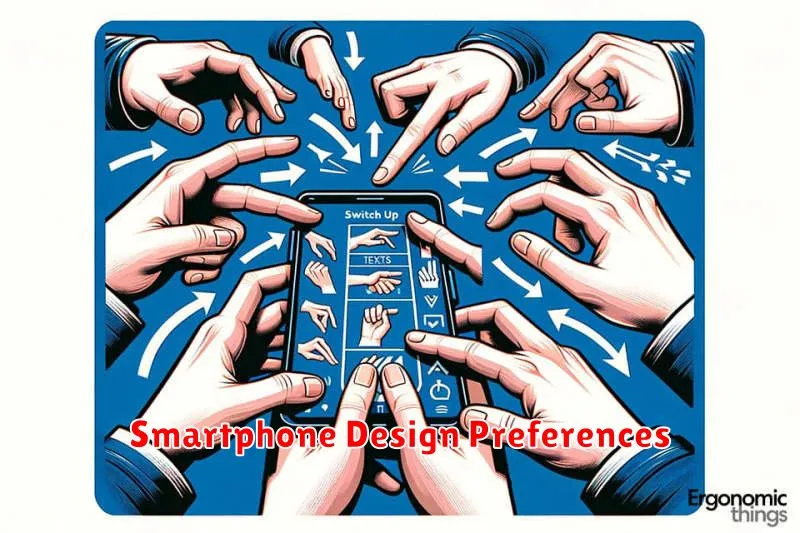In the ever-evolving world of smartphones, consumers are often captivated by dazzling displays, powerful processors, and impressive camera specifications. However, amidst this fascination with cutting-edge technology, two crucial factors often get overlooked: smartphone weight and build quality. While seemingly mundane, these elements significantly impact the overall user experience, affecting everything from daily comfort and portability to long-term durability. This article delves into the often-underappreciated importance of smartphone weight and build, demonstrating why they deserve more consideration than they typically receive.
Choosing a smartphone involves more than just selecting the device with the best specs on paper. The physical feel of a phone in your hand, its heft, and the robustness of its construction play a pivotal role in how satisfying and enjoyable it is to use on a daily basis. From the subtle strain of holding a heavy device for extended periods to the peace of mind that comes with a durable build, understanding the impact of smartphone weight and build quality can drastically alter your perception of the ideal smartphone. Ignoring these seemingly minor details can lead to discomfort, frustration, and even premature device failure, making it essential to consider them carefully before making your next purchase.
Material Used in Smartphones
The materials used in a smartphone significantly impact its weight, durability, and overall feel. Aluminum and its alloys are popular choices for their strength and lightweight properties, offering a premium feel.
Plastic, while generally less expensive, can feel less premium but offers benefits like impact resistance. Glass, often strengthened chemically or thermally, is predominantly used for displays and increasingly for back panels, enhancing aesthetics but also increasing fragility.
Other materials like stainless steel and ceramic are also used, though less commonly, for their enhanced durability and scratch resistance, often contributing to a higher price point.
Weight and Daily Usability
Smartphone weight significantly impacts daily usability. A heavy phone can become tiresome to hold during extended use, particularly for activities like reading, browsing, or video calls. This fatigue can lead to discomfort and even pain in the hand, wrist, and arm.
Conversely, an excessively light phone can feel flimsy or cheap, impacting perceived quality. Finding the right balance is crucial. A phone’s weight distribution also plays a vital role. Evenly distributed weight contributes to a more comfortable and secure grip.
Consider one-handed usage. A heavy phone can be difficult to manipulate with one hand, making simple tasks like texting or navigating apps challenging. This is especially pertinent in situations where you only have one hand free.
Glass vs Plastic vs Metal
The choice of material significantly impacts a smartphone’s feel, durability, and overall aesthetic. Each material presents its own set of advantages and disadvantages.
Glass backs offer a premium look and feel, often paired with wireless charging capabilities. However, glass is more susceptible to cracking or shattering upon impact.
Plastic, while less visually appealing than glass or metal, offers greater durability against drops. It’s also generally lighter and less expensive to manufacture. However, plastic can feel cheap and is more prone to scratches.
Metal (typically aluminum alloys) provides a robust and premium feel, offering good heat dissipation. However, metal can be prone to denting and can interfere with wireless charging. Some manufacturers opt for a hybrid approach, combining elements of these different materials to capitalize on their respective strengths.
Build Quality and Durability

Build quality significantly impacts a smartphone’s longevity and overall user experience. Durable materials such as aluminum, stainless steel, or high-quality polycarbonate contribute to a phone’s resistance to scratches, drops, and general wear and tear. A well-constructed device feels solid and premium in the hand, inspiring confidence in its ability to withstand daily use.
Beyond material choice, manufacturing precision plays a crucial role. Tight tolerances and meticulous assembly ensure a phone feels robust and functions flawlessly over time. Look for details like properly sealed buttons and ports, which contribute to water and dust resistance, further enhancing durability.
Impact on Hand Comfort
Smartphone weight and build significantly impact hand comfort, especially during extended use. A heavy or poorly designed phone can lead to hand fatigue, cramping, and even pain.
Ergonomics play a vital role. A phone that sits well in the hand, with balanced weight distribution, reduces strain. Material choice also contributes to comfort. A phone with a textured or soft-touch finish can improve grip and reduce the likelihood of dropping it.
Slim Designs vs Rugged Models
Consumers often face a choice between sleek, slim smartphones and more rugged, durable models. Slim designs prioritize aesthetics and portability, often featuring lightweight materials like aluminum or glass. These phones tend to be lighter and easier to pocket, appealing to users focused on style and comfort.
Rugged models, on the other hand, emphasize protection and durability. Built with reinforced frames and shock-absorbing materials, they can withstand drops, bumps, and even exposure to water and dust. These phones prioritize function over form, appealing to users with active lifestyles or those working in demanding environments.
Water and Dust Resistance Ratings
Ingress Protection (IP) ratings provide standardized information about a device’s resistance to water and dust. These ratings consist of two digits. The first digit indicates the level of dust protection, ranging from 0 (no protection) to 6 (dust tight). The second digit represents water resistance, from 0 (no protection) to 9 (protection against high-pressure, high-temperature water jets).
A common rating for smartphones is IP68. This means the device is completely protected against dust and can withstand submersion in water up to a certain depth and duration, as specified by the manufacturer. Always check the manufacturer’s specific guidelines as IP ratings are not absolute guarantees against damage.
Aesthetic Appeal and Finishes
Beyond the tactile feel, a smartphone’s finish significantly contributes to its perceived quality and aesthetic appeal. Material choices like glass, metal, or plastic each offer a unique visual and tactile experience.
A premium finish, whether it’s a matte texture, polished metal, or a unique color, can elevate a device’s overall impression. This visual appeal is often a key factor in a consumer’s purchasing decision. Subtle details, like the placement of buttons and the smoothness of transitions between materials, further enhance the aesthetic appeal.
Ergonomics and Grip Factors
Ergonomics play a crucial role in smartphone satisfaction. A phone’s weight and build significantly impact how comfortably it fits in your hand and how easily it can be used for extended periods. A device that’s too heavy can cause fatigue, while one that’s too light may feel flimsy and insecure.
Grip is another key factor. Materials and textures affect how securely you can hold your phone. A slippery phone is more prone to accidental drops. Build materials like metal or glass can impact weight and grip, influencing the overall user experience.
Smartphone Design Preferences

Design preferences play a crucial role in smartphone selection. Consumers weigh various factors when choosing a device, and these preferences are often highly personal.
Some users prioritize a lightweight and slim profile for comfortable one-handed use and pocketability. Others may prefer a more robust and durable build, potentially accepting added weight for increased protection against drops and impacts.
Material choices also factor into preferences, with some favoring the premium feel of glass and metal, while others might prefer the practicality and grip of plastic or other composite materials.

